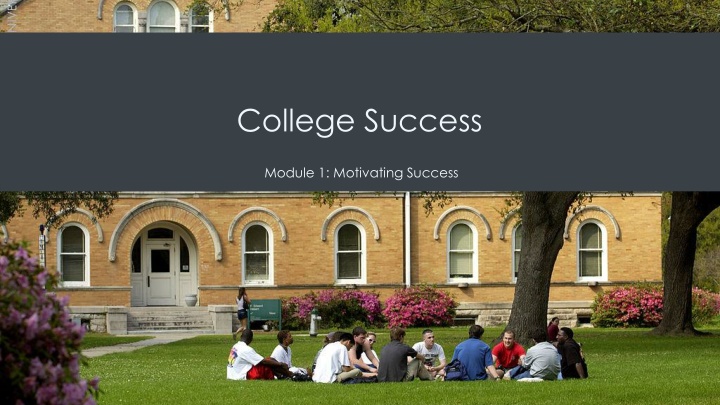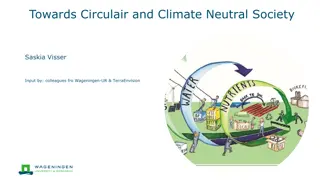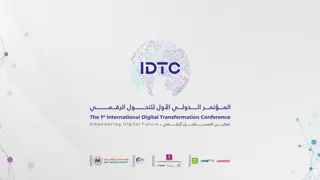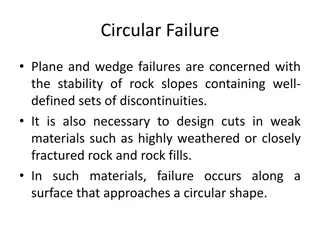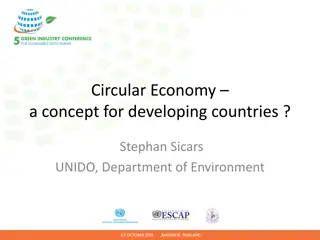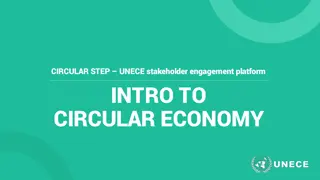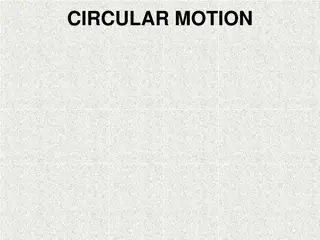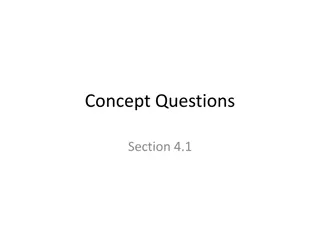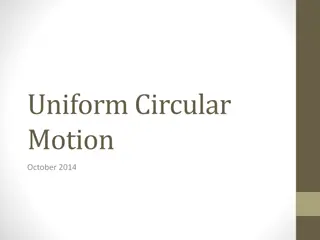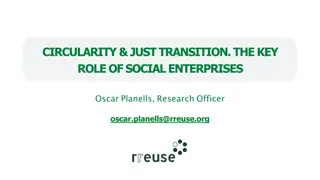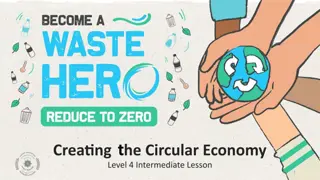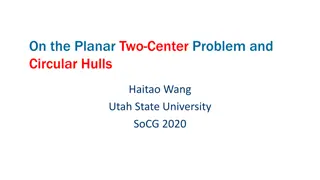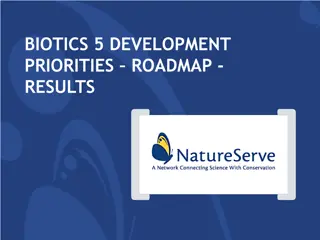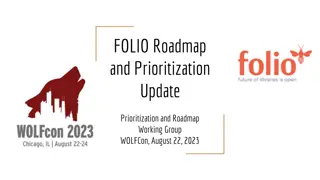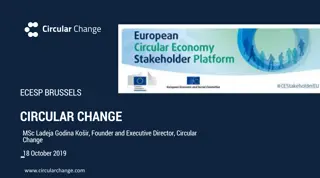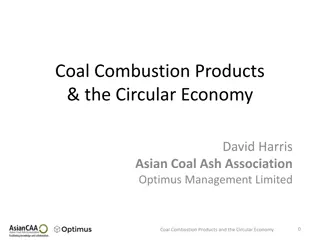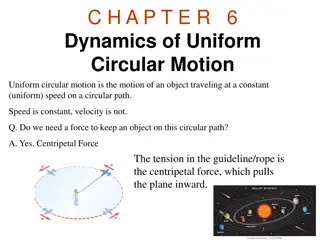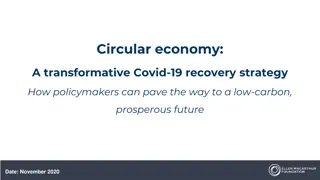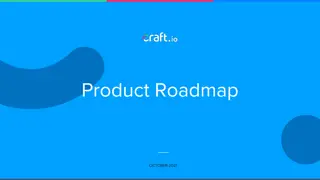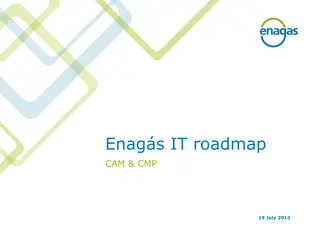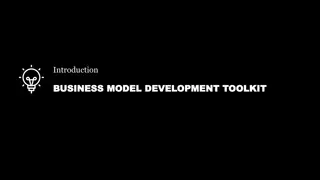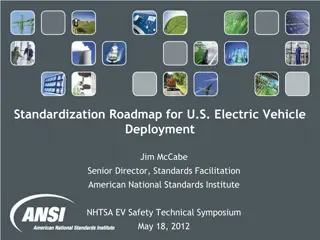Circular Transformation Roadmap Development
This roadmap development tool helps plan key activities, timelines, and responsibilities for a circular transformation journey, supporting you in achieving sustainability and innovation goals.
Download Presentation

Please find below an Image/Link to download the presentation.
The content on the website is provided AS IS for your information and personal use only. It may not be sold, licensed, or shared on other websites without obtaining consent from the author.If you encounter any issues during the download, it is possible that the publisher has removed the file from their server.
You are allowed to download the files provided on this website for personal or commercial use, subject to the condition that they are used lawfully. All files are the property of their respective owners.
The content on the website is provided AS IS for your information and personal use only. It may not be sold, licensed, or shared on other websites without obtaining consent from the author.
E N D
Presentation Transcript
College Success Module 1: Motivating Success
Module Learning Outcomes Describe factors in motivating success in your first year of college 1.1: Explore personal identity and responsibilities of a college student 1.2: Describe college basics like different class types, course and college policies, and student resources 1.3: Define success in college and identify strategies for achieving success 1.4: Define academic honesty and understand consequences of academic dishonesty
Learning Outcomes: Student Life and Responsibilities 1.1: Explore personal identity and responsibilities of a college student 1.1.1: Identify different categories of students as well as similarities and differences among students 1.1.2: Describe how personality tests and skills inventories help to evaluate career paths and identify personal interests to meet educational goals 1.1.3: Describe the responsibilities of college student life and how they differ from high school or early career life
International / Nonnative English Speakers Travel from home country to attend college College Students Traditional First-Generation College Student Straight from high school to college First in the family to attend college Nontraditional Working Students Enter college after gaining work/family experience Employed either part- or full-time Students with Disability Commuters Students with a physical and/or mental impairment that substantially limits one or more major life activity. Students who live off-campus
Class Activity : Similarities and Differences In groups of 4, identify the category or categories of college student that best describes you. Share the benefits as well as hardships experienced that stem from each category you identify with as a student. After each member has shared their experience, discuss as a group the similarities and differences between the members. International / Nonnative English Speaker Traditional Nontraditional First- Generation Student with Disabilities Working Student Commuter
Personal Identity and Values Assessing Your Personal Identity and Values Self-assessment type questionnaires about your thoughts, attitudes, beliefs, behaviors, etc. Educational Goals Career Planning Personality & Identity Inventories: Career Type Inventories: Myers-Briggs Type Indicator (MBTI) Kiersey Temperament Sorter Values Clarification Questionnaire ISEEK Career Cluster Interest Survey Career Interest Survey
Responsibility Through Life Stages Decision-Making Learning Performance Evaluation Achievement High School College Early Career OWNERSHIP AND CONSEQUENCES External Ownership Minor Consequences Internal Ownership Serious Consequences
Class Discussion Consider the following processes through the stages of a high school student, college student, and early career professional: decision-making learning, achievement performance evaluation Identify how each process is performed, measured, achieved at each stage Discuss who is primarily responsible for how each is performed and the consequences of each
Practice Question 1 Eduardo joined the military after high school and started a family. Now that he s separated from the military, he has a full-time job and lives in a great neighborhood. He is attending college to get his bachelor s degree while he works for a construction company. Which category of student best describes Eduardo's current situation? a. Nontraditional b. Working c. Commuter d. Traditional
Learning Outcomes: College Overview 1.2: Describe college basics like different class types, course and college policies, and student resources 1.2.1: Identify differences in class delivery and compare strategies for success in each type 1.2.2: Identify differences in types of classes within your degree plan, such as electives and core requirements 1.2.3: Explain how to access individual course policies and collegewide policies 1.2.4: Identify major college resources and how to use them when needed
Types of Classes TYPE CHARACTERISTICS TIPS FOR SUCCESS Dedicated study habits, note-taking, reading, and active-listening Ask questions during class & office hours Align course goals with your needs Get comfortable with team and partner work Arrive well prepared and actively participate and listen Practice mutual respect, initiative, and responsiveness Time-Management for self-paced work Attendance and preparation Professor shares large amounts of information Learn through listening and discussing LECTURE Activity-based controlled environment Learn by doing LABORATORY In-depth topic exploration with small group of higher-level learning Learn through reading, discussion, and research SEMINAR Small, active groups to develop concrete skills Learn from other students and by doing Short and intensive focusing on immediate application Learn through interaction Work independently with an advisor or faculty member on unique area of interest Learn through reading and writing STUDIO Apply yourself Participate fully WORKSHOP Work independently and cooperatively Adopt high standards for your work Focus on your interest Communicate openly before, during, and after Learn in advance about the culture Take opportunities to socialize INDEPENDENT STUDY Learn in a different country Learn through experience STUDY ABROAD
Technology-Enhanced Formats Face-to-Face / Traditional : 0% online content delivery Meets in-person, on campus Web Enhanced : Meet face to face, but has some digital reading or content < 30% online content delivery Hybrid / Blended: Flipped classrooms view lectures at home before class meetings Fewer in-person sessions than face-to-face or web enhanced classes 30-79% online content delivery Online: Almost all content is delivered online Very few to no on-site face to face class meetings 80+% online content delivery
Courses in Your Degree Plan REQUIRED FOR MAJOR CORE ELECTIVE General education(GE) requirement for graduation Required for your specific field or study Variable component outside of major or core requirements Specific classes must be taken for degree plan Essential for academic degree Must take a set number to graduate Not always foundational to major Students can choose through optional subjects
Course & College-wide Policies COURSE-BASED POLICIES COLLEGE-WIDE POLICIES Set of codes and policies including: Grading Absences Academic Integrity Submitting work Faculty Communication Set of codes and policies including: Academic Standards Degree Types and requirements GPA Disciplinary actions Find them: Online / College Handbook Guidance Counselor Division Building Find them: Syllabus
College Resources ACADEMIC FINANCE, LIVING, & PLANNING Academic Advising Tutoring and Writing Centers Support Facilities: Computer Labs, Speech Labs, etc. Library Reference Desk Financial Aid Office Campus Housing Office Career Services HEALTH SOCIAL & NETWORKING Campus Health Center Campus Counseling Disabilities Office* Also provides academic support Spiritual Life Multicultural Resource Center
Practice Question 2 Which type of course requires you to contribute to higher-level learning through in-depth topic exploration as a small group? A. Seminar B. Lecture C. Laboratory D. Independent Study
Practice Question 3 Where will you be able to find policies about submitting work and communicating with your professor? A. College Handbook B. Syllabus C. Division Building D. Academic Advising
Learning Outcomes: Defining Success 1.3: Define success in college and identify strategies for achieving success 1.3.1: Explore definitions for success and explain how grades play a role in shaping success in college 1.3.2: Identify specific strategies to achieve college success during your freshman year
Success and Grades Degree Grades Social Career Physical Success defined: A personal vision that drives how you spend your time and energy AREAS OF SUCCESS Grade Point Average (GPA) Calculated average of the letter grades you earn each semester on a 0 4.0 or 5.0 scale Cumulative GPA Ongoing average of all your semester grades beginning freshman year Gainful employment in chosen career Occupational status and earnings IMPACTS SUCCESS Indicator of further academic success Predictor of persistence, ability to graduate, and graduate school
Class Discussion: Defining Success 1. Create three-five columns on a document. 2. Label the categories based on areas of success, such as grades, degree, career, social, health, financial, etc. 3. Write 1-3 goals within each category that symbolize what success in that area means to you. Jot down all of your ideas. 4. Discuss with a partner. 5. After the discussion with your partner, write a short reflection about your lists and identify the one category and goal that most represents your definition of success.
Success in Your First Year FIRST YEAR TIPS: Get and read the books Engage in Support Structures Orientation First-Year Seminars Advising Early Warning Systems Learning Communities Student Success Initiatives Remediation Take notes in class and when reading Know your Professors Get familiar with each course syllabus Use academic advisors Apply for as many scholarships as possible Focus on Grades Career: Internships and early career recruitment Recognition: Top clubs and major-specific honoraries Reliability: Create good habits that lead to good grades Set goals and stay focused Write and email in a professional manner Cut out distractions (including phones) during class and study time
Practice Question 4 Which of the following is considered a support structure that is designed to help first-year college students? A. Student Success Initiatives B. Study Groups C. Office Hours D. Student Life Clubs
Learning Outcomes: Academic Honesty 1.4: Define academic honesty and understand consequences of academic dishonesty 1.4.1: Define academic honesty and common forms of academic dishonesty 1.4.2: Identify common scenarios that can lead to academic dishonesty, and possible consequences 1.4.3: Identify strategies for avoiding plagiarism
Understanding Academic Honesty Demonstrating and upholding the highest integrity and honesty in all the academic work that you do Academic Honesty Defined Cheating: Sharing or receiving forbidden information Deception: Providing false information to an instructor concerning an academic assignment Fabrication: Falsifying data, information, or citations in academic assignments Common Forms of Academic Dishonesty Plagiarism: Adopting or reproducing original intellectual creations of another person without proper acknowledgment
Avoiding Academic Dishonesty Common Scenarios resulting in Academic Dishonesty Running out of time Peer Pressure Pressure to Perform Not Understanding Plagiarism QUOTES Cite your source Avoiding Plagiarism Take careful notes as you research Web research: copy and paste links in notes When in doubt, cite the source or leave material out Visit the writing center PARAPHRASE Cite the author VISUAL MATERIALS Cite the source Cite the researcher(s)
Class Activity: Create Your Action Plan Consider each of the common scenarios that result in academic dishonesty and why: Running out of time Peer Pressure Pressure to Perform Not Understanding Plagiarism In groups of 3-5 Discuss strategies to avoid each scenario Discuss strategies to avoid academic dishonesty Identify sources on campus that define academic dishonesty.
Practice Question 5 Nicole tried to submit her term paper past the deadline. When it was not accepted, she emailed her professor stating that she was verbally given an extension, even though she was not. What form of academic dishonesty has Nicole committed? A. Plagiarism B. Fabrication C. Deception D. Cheating
Quick Review Remember individuals have unique identities and values which shape educational and career planning goals. Moving from high school to early career, students take more ownership and face more serious consequences with decision-making, learning, achievement, and performance evaluations Recall that a degree plan consists of 3 types of courses: core, required for major, and electives List the types and formats of classes in college List resources that support your academic, health, social, and life skills during college Know both college-wide and course specific policies Take advantage of support structures and focus on your learning and grades Uphold academic honesty, engage in strategies to avoid common scenarios that lead to academic dishonesty
